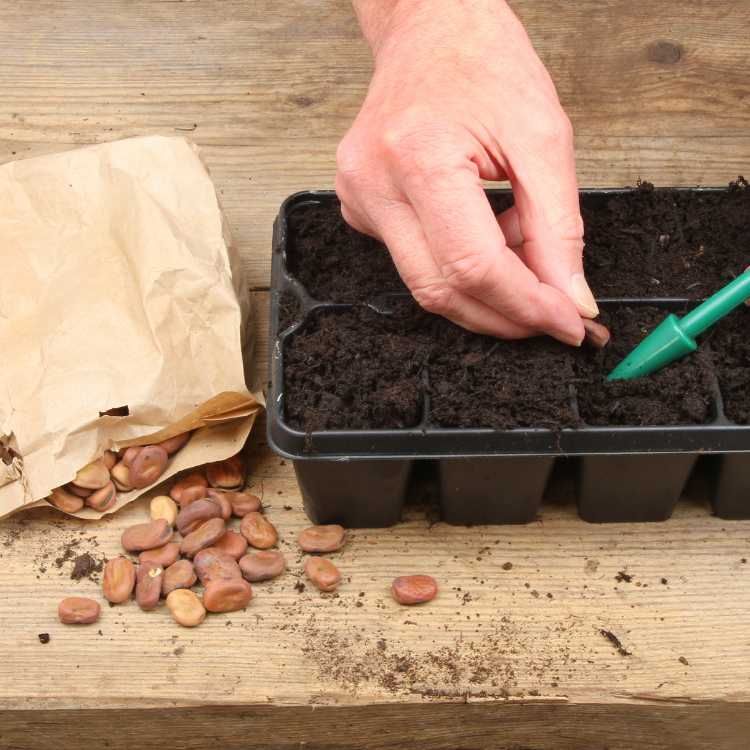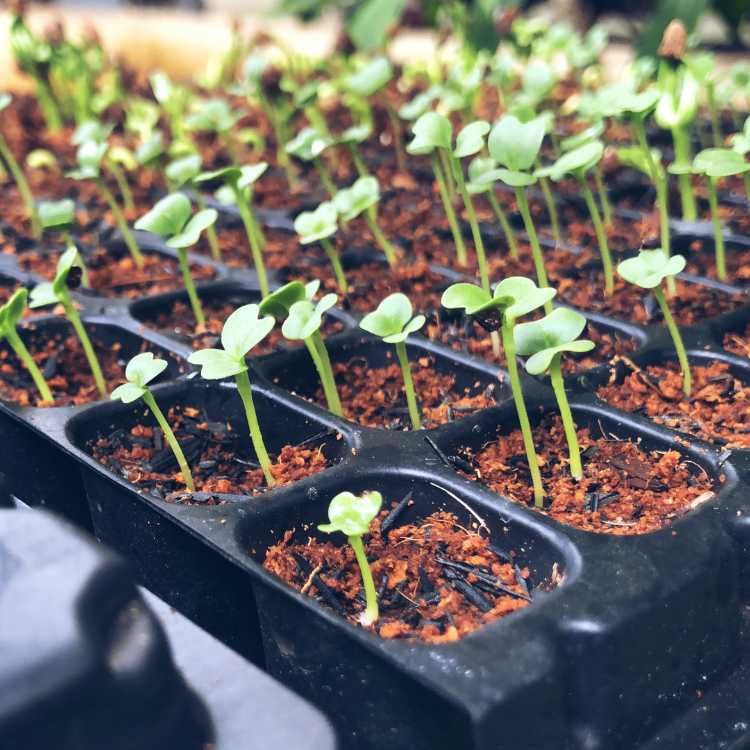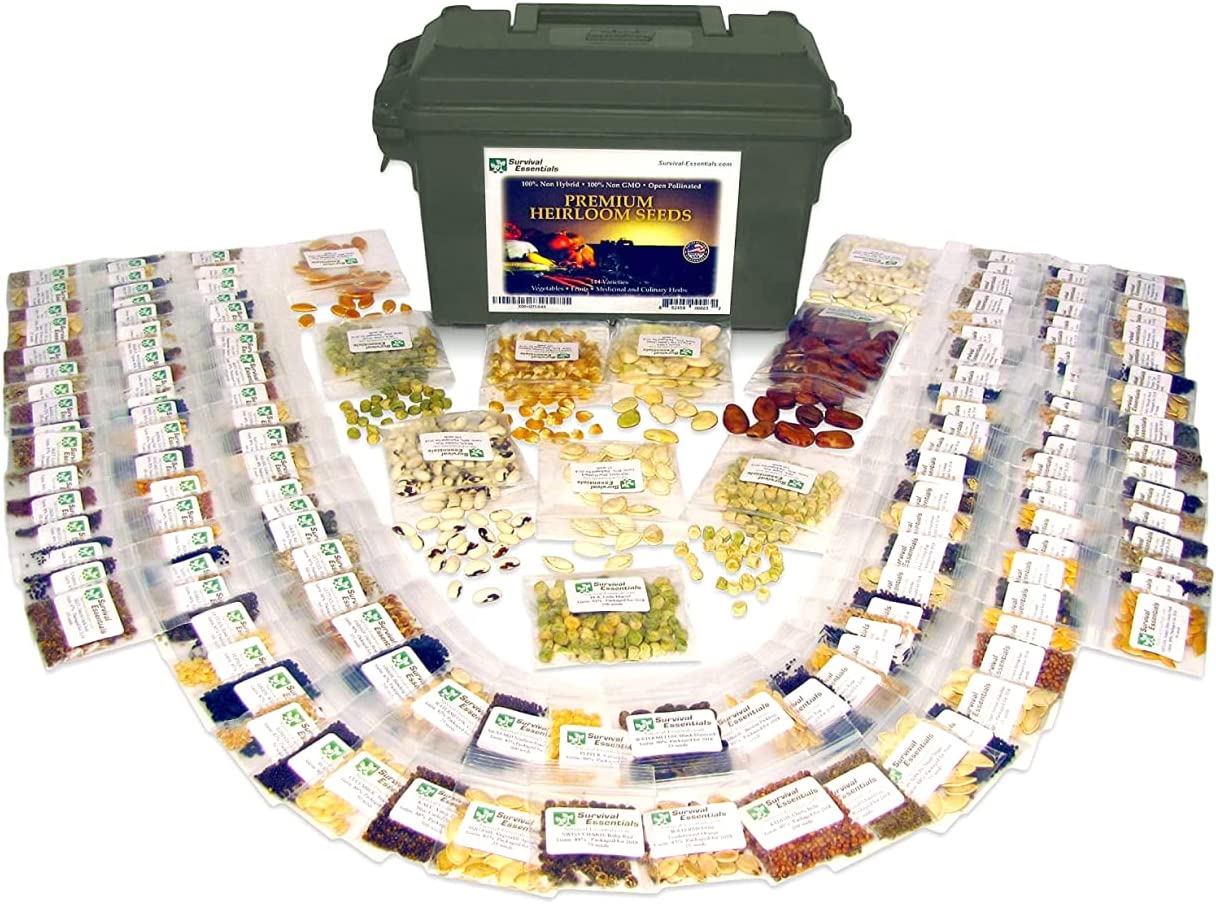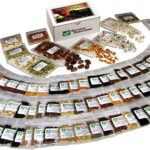
Article-at-a-Glance
Urban survival seed kits are essential for city dwellers to create self-sustaining food sources.
Heirloom seeds are preferable for urban gardens due to their adaptability and genetic diversity.
Space-saving techniques, like vertical gardening, maximize greenery in small urban spaces.
Regular maintenance and care are crucial for a thriving urban garden and a steady food supply.
Survival Essentials offers a comprehensive selection of heirloom seed kits for urban gardeners.
Imagine biting into a fresh tomato, plucked right from the vine on your balcony garden. The sweet burst of flavor is not just a treat for your taste buds; it’s a triumph for your resilience. Urban survival seed kits aren’t just a box of potential plants—they’re a blueprint for food independence in the heart of the concrete jungle.
As a passionate urban gardener, I’ve learned that a packet of seeds holds more than the promise of fresh produce. It holds the power to transform a balcony, rooftop, or windowsill into a verdant oasis. Whether you’re an apartment dweller with a few pots or a homeowner with a modest yard, urban survival seed kits are your first step to sustainable living.
Urban Survival Seeds: Securing Your Green Space
Why Seeds Matter for City Dwellers
City life often means limited access to green spaces and fresh, affordable produce. But with a survival seed kit, anyone can start a garden, regardless of their experience level. These kits provide an array of seeds selected for their resilience in urban environments, allowing you to cultivate a variety of vegetables, fruits, and herbs.
But it’s not just about having fresh food at your fingertips. Urban gardening with survival seeds is a way to combat food deserts, reduce your carbon footprint, and even improve mental health. It’s a hands-on approach to connecting with nature, even when surrounded by skyscrapers.
Perks of Urban Gardening
Urban gardening goes beyond beautifying your living space; it creates a self-sufficient ecosystem. Here are some of the benefits:
Food Security: With your own garden, you’re less reliant on grocery stores and can enjoy fresh, organic produce.
Stress Relief: Tending to plants is therapeutic, offering a peaceful retreat from the hustle of city life.
Community Building: Sharing tips, seeds, or produce with neighbors fosters a sense of community.
Educational: Gardening teaches valuable skills and offers insights into the importance of sustainability.
Gardening is an empowering act of resilience. It reconnects us with the cycles of nature and reminds us of our capacity to nurture life amid concrete and steel. Understanding how seeds can shape future urban landscapes is essential for sustainable city living.
Gearing Up for Growth: Survival Seed Basics

Choosing the Right Seeds for Urban Gardens
Selecting seeds for your urban garden is like choosing the right tools for a job. You want seeds that are adaptable, hardy, and suited to the unique conditions of city life. Look for seeds that can thrive in containers, have a short maturity time, and are resistant to pests and diseases common in dense areas.
Most importantly, your seeds should be open-pollinated or heirloom varieties. These seeds are known for their genetic diversity, which allows them to adapt to the specific conditions of your garden, improving year after year.
For example, ‘Cherry Belle’ radishes are a fantastic choice for beginners. They’re quick to mature and don’t need as much sunlight as other vegetables, making them perfect for balconies with partial shade.
When you’re selecting seeds, also consider the size of the mature plants and their root systems. Some plants, like dwarf tomatoes or climbing peas, are particularly well-suited to small spaces and can be grown vertically to save space.
Heirloom vs. Hybrid: What’s Best for Your Balcony?
Heirloom seeds are the gems of the gardening world. These are the seeds that have been passed down through generations, treasured for their flavor, nutritional value, and resilience. They are open-pollinated, meaning they reproduce naturally and maintain their unique characteristics over time.
Hybrid seeds, on the other hand, are the result of crossbreeding between different varieties of plants. They can offer some advantages, like improved disease resistance or uniformity, but they are not suitable for seed saving as they don’t reliably produce true-to-type offspring.
For urban survival gardens, heirlooms are the way to go. They not only provide a connection to the past but also ensure a diverse and adaptable garden for the future. Plus, by saving and sharing heirloom seeds, you become part of a community dedicated to preserving plant diversity.
Transforming a drab patch of concrete into a lush, edible landscape might seem like magic, but it’s entirely within your reach. The key is starting with a strong foundation—your survival seed kit—and following a few simple steps to ensure your urban garden thrives.
Step-by-Step Guide to Starting Your Garden
First, assess your space. Whether it’s a windowsill, balcony, or rooftop, understanding the amount of sunlight and exposure to elements it receives is crucial. Next, choose containers that fit your space and fill them with a high-quality potting mix, rich in organic matter. Sow your seeds according to the instructions, being mindful of their needs for water and light. Remember, patience is a gardener’s virtue—the sprouts will emerge in due time, ready to grow with your care.
Now, let’s talk about maximizing your space. Urban gardens often lack the square footage of rural counterparts, but with a dash of creativity, you can grow an abundance of food.
Space-Saving Techniques for Small Areas
Vertical gardening is a game-changer for small spaces. Use trellises, wall planters, and hanging baskets to grow upwards. Consider companion planting, where different plants share a pot and benefit each other—like tomatoes with basil, which can enhance flavor and deter pests. And don’t forget about succession planting; stagger plantings a few weeks apart to ensure a continuous harvest.
Another tip is to use your vertical space wisely:
Install shelves for multiple levels of plants.
Use railing planters to take advantage of perimeter space.
Hang pocket planters on walls or fences for herbs and greens.
Overcoming Urban Gardening Challenges
Urban gardening is not without its challenges, but with a little know-how, you can overcome them. One of the most common issues is dealing with limited space and light, but with the right techniques, these obstacles can be turned into opportunities for a thriving garden.
For example, a gardener in a north-facing apartment might think they can’t grow vegetables, but leafy greens like spinach and lettuce can flourish in partial shade.
Tackling Limited Space and Sunlight
When space is at a premium, think outside the box. Utilize window boxes for herbs and small vegetables. Reflective surfaces can help bounce light around a shady balcony, giving plants the boost they need. And choose dwarf or bush varieties of plants that are bred to be compact.
For those with limited sunlight, focus on shade-tolerant plants. Many herbs, such as mint and parsley, can manage with less direct sun. Leafy greens are another great option, as they often prefer cooler, shadier conditions.
Adapting to the Urban Climate
City environments can create unique microclimates, often warmer and windier than surrounding areas. Select plants that can tolerate these conditions, and provide protection from intense sun or gusts with shade cloth or windbreaks. Watering may need to be more frequent to combat the heat and wind that can dry out soil quickly.
Nurturing Your Garden: Tips for Continued Success
Once your garden is established, the journey to a bountiful harvest is ongoing. Regular care is the secret to a garden that not only survives but thrives.
Regular Maintenance and Care for Urban Crops
Keep a close eye on your plants for signs of stress or pests. Water consistently, but be careful not to overwater—containers can retain moisture longer than traditional gardens. Fertilize with a balanced, organic fertilizer to provide nutrients without harming the environment. And always be on the lookout for ways to improve your setup—gardening is a learning experience.
Harvesting and Preserving Your Bounty
Harvesting at the right time is crucial for the best flavor and to encourage further production. Leafy greens can be picked leaf by leaf, while fruits like tomatoes should be harvested when they’re fully colored but still firm. And when you have more than you can eat, learn to preserve your harvest through canning, drying, or freezing to enjoy your garden’s gifts year-round.
Remember, every little bit of care you give to your garden will come back to you tenfold in the form of crisp veggies and vibrant flowers. It’s a labor of love that rewards not just with food, but with the satisfaction of creating life amidst the urban sprawl.
The Best Urban Survival Seed Kits on the Market
Now, let’s talk about where to find the best urban survival seed kits. Survival Essentials is a standout option, offering a wide range of heirloom seed kits perfect for the urban gardener. Their kits are carefully curated to include a variety of easy-to-grow, nutritious plants that are well-suited to urban environments.
Each kit comes with detailed growing instructions and tips for maximizing yields in small spaces. Plus, with their focus on heirloom varieties, you’re investing in seeds that can be saved and replanted year after year, ensuring a sustainable garden that can adapt to your unique urban conditions.
Check out their collection and take the first step towards urban self-sufficiency:

With the right survival seed kit, a little bit of space, and a dash of dedication, you’ll be amazed at what you can grow. Urban gardening is not just a hobby; it’s a lifestyle that brings resilience, beauty, and a bounty of fresh food right to your doorstep.
As we delve deeper into the benefits of urban survival seed kits, it’s crucial to understand what sets them apart. Survival seeds are more than just ordinary seeds; they are the embodiment of food security and sustainability in an unpredictable world.
“Survival Essentials” Seed Kit Review
When it comes to urban survival seed kits, “Survival Essentials” has made a name for itself. Their kits are renowned for their variety and quality, boasting a vast collection of heirloom seeds. The seeds come with clear instructions, ensuring that even novice gardeners can cultivate a flourishing garden. The kits include a diverse range of vegetables, herbs, and fruits, all non-GMO and open-pollinated, allowing you to save seeds for future planting seasons.
Where to Find High-Quality Seeds Online
Quality seeds are the foundation of any successful garden. Online, “Survival Essentials” is a top-tier provider. Their website is a treasure trove of options for the urban gardener. With an easy-to-navigate layout and detailed descriptions, you can find the perfect seed kit to suit your urban space and gardening goals.
FAQ
What Are Survival Seeds?
Survival seeds are specially selected for their ability to provide a reliable source of food in various conditions. They are typically non-GMO, open-pollinated, and often heirloom varieties, which means they can be saved and replanted year after year, ensuring a continuous food supply.
Why Are Non-GMO and Heirloom Seeds Preferred?
Non-GMO and heirloom seeds are preferred for survival gardening because they are not genetically modified and have a history of stable, consistent growth over many generations. They tend to be more resilient and adaptable to local growing conditions and can help maintain biodiversity in your garden.
How Do I Store Survival Seeds Long-Term?
Proper storage is key to maintaining the viability of your survival seeds. Keep them in a cool, dark, and dry place. Airtight containers or sealed packets can protect seeds from moisture and pests. Some gardeners use refrigeration or even freezing to extend the life of their seeds further.
Can I Grow Survival Seeds in Pots?
Absolutely! Many survival seeds are well-suited for container gardening. Choose compact varieties and ensure adequate drainage in your pots. With the right soil mix and regular care, you can grow a range of plants in pots, from herbs to tomatoes.
Use quality potting soil and ensure pots have drainage holes.
Select dwarf or bush varieties of plants for better growth in containers.
Regularly water and fertilize your potted plants for optimal health.
What Vegetables Are Best for Urban Gardening?
When it comes to urban gardening, some vegetables are more suitable than others. Here are a few that thrive in small spaces:
Tomatoes: Choose cherry or bush varieties for containers.
Leafy Greens: Spinach, kale, and lettuce can grow in partial shade.
Herbs: Basil, cilantro, and parsley are easy to grow and use in the kitchen.
Root Vegetables: Radishes and carrots require deeper pots but are otherwise simple to manage.
Peppers: Both sweet and hot varieties do well in pots with plenty of sunlight.
With the right approach, urban gardening can be a rewarding and fruitful endeavor. Survival seed kits are your ticket to this green revolution. Whether you’re a seasoned gardener or a beginner, the journey to self-sufficiency and sustainability starts with a single seed.
Remember, every plant you grow not only adds beauty and life to your urban space but also inches you closer to a sustainable lifestyle. So, why not start today? Check out “Survival Essentials” for an extensive range of urban survival seed kits and embrace the joy of urban gardening.







Leave a Reply